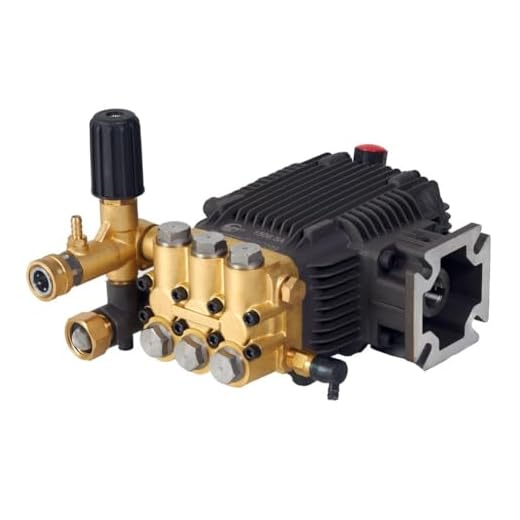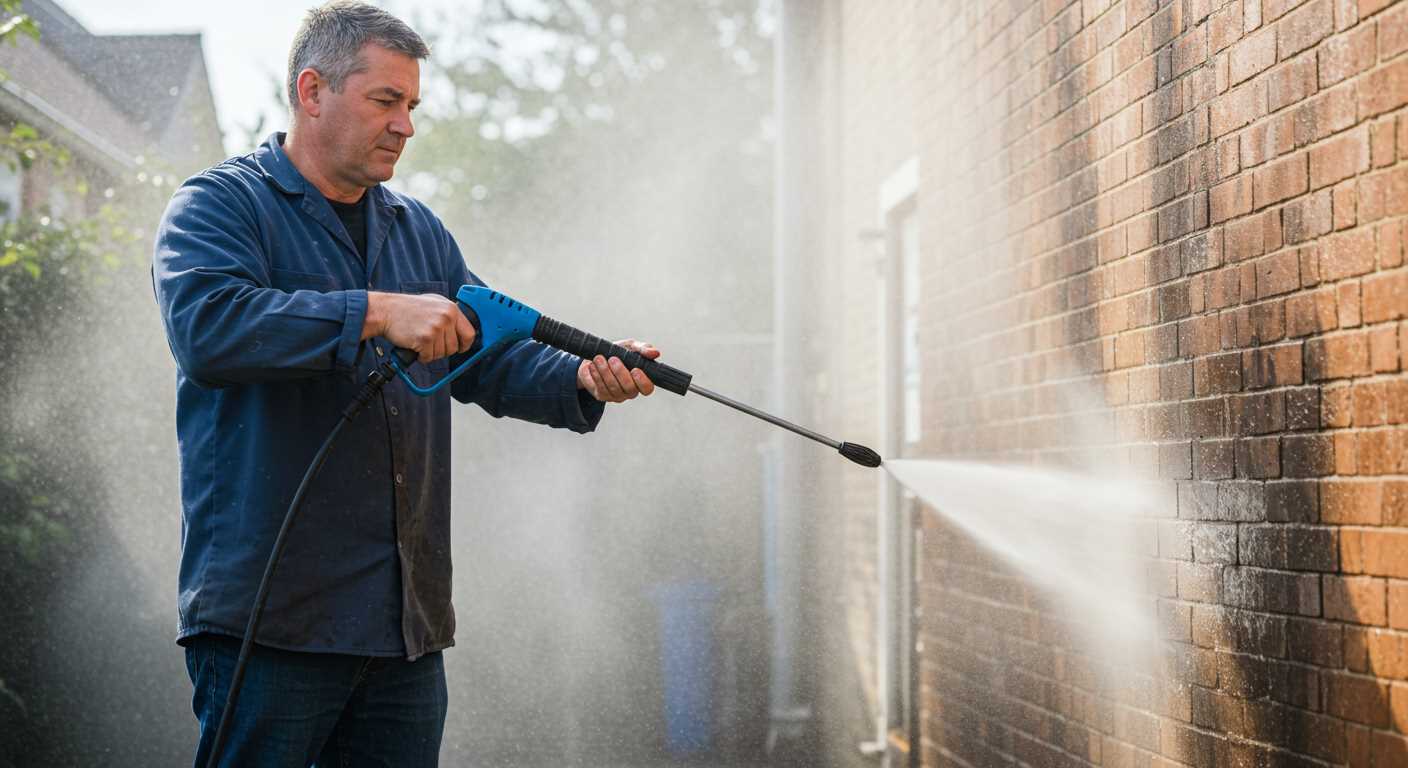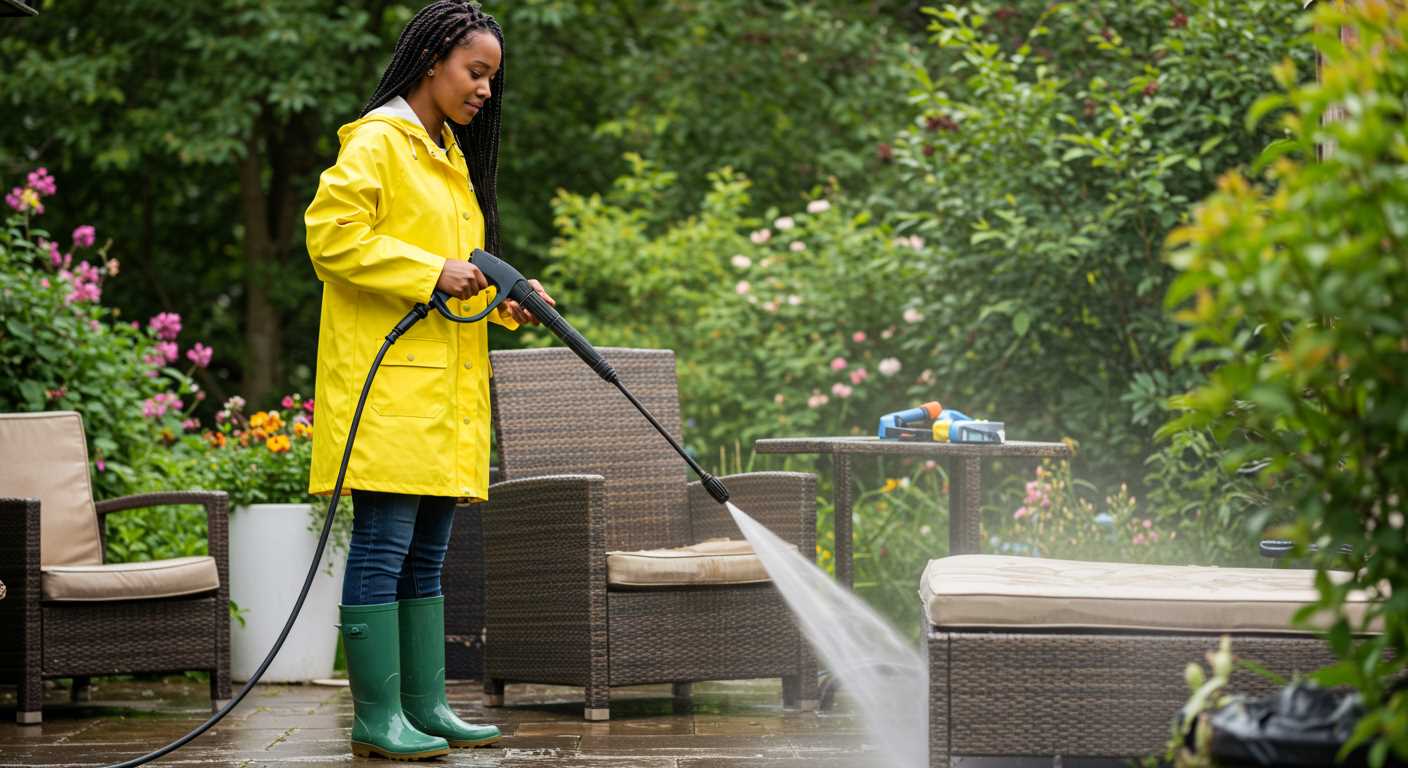



For optimal results, always ensure the device is connected to a suitable water source before operation. This machine utilizes a powerful motor to create high-pressure water flow, which effectively lifts dirt and grime from various surfaces.
The heart of this equipment lies in its pump mechanism, which pressurises the water, resulting in a concentrated stream. Focus on adjusting the nozzle settings according to the cleaning task at hand, as different tasks require varying pressure levels. For example, a wider spray is ideal for delicate surfaces, while a narrow stream works best for tougher stains.
In addition, regular maintenance is key to prolonging the life of this tool. Check the hoses and connections for leaks, and ensure the nozzles are clear from blockages. Using a suitable detergent can enhance cleaning efficacy, but always verify compatibility with your specific model.
Lastly, always prioritise safety. Wearing protective gear, such as goggles and gloves, is essential while operating this powerful device. Understanding its operational mechanics will not only improve your cleaning outcomes, but also ensure a safe and productive experience.
Mechanics Behind a Karcher Cleaning Machine
For optimal functionality, ensure the flow of cold water is consistent. This model pulls water via a hose connected to the inlet. The pump, driven by an electric motor, increases the pressure significantly compared to standard garden hoses, enabling powerful cleaning. The motor typically operates at around 1400 to 1800 watts, which directly correlates with performance levels.
Internal Components Breakdown
| Component | Function |
|---|---|
| Motor | Powers the device and drives the pump to create high-pressure water flow. |
| Pump | Raises water pressure, providing effective cleaning force through nozzles. |
| Spray Gun | Directs high-pressure water with adjustable settings for various tasks. |
| Hose | Transports water from the unit to the nozzle, typically reinforced for durability. |
| Filter | Prevents debris from entering the pump, safeguarding internal components. |
When engaged, the water enters the inlet and is filtered. The pump compresses this water, creating high-pressure output through the spray gun’s nozzle. Various attachments and nozzles allow for customization based on the surface being cleaned, facilitating thorough applications from delicate to robust tasks. Regular maintenance, including checking for leaks and ensuring the filter is clear, extends the lifespan of these tools. Proper storage after usage is equally critical to avoid damage and ensure readiness for the next cleaning task.
Understanding the basic components of a Karcher pressure washer

Familiarity with the integral parts of this cleaning device enhances functionality. Key elements include:
- Electric Motor or Engine: This powers the unit, converting electrical energy into mechanical energy, essential for generating high-pressure water flow.
- Water Inlet: The entry point for water connects to a garden hose, supplying the machine with water to be pressurised.
- High-Pressure Pump: This component pressurises the incoming water, escalating its force to create effective cleaning power. Materials used in the pump, such as brass or stainless steel, influence durability and efficiency.
- Spray Gun: The user interface for directing the high-pressure water. Various nozzles offer different spray patterns, enhancing versatility for various cleaning tasks.
- Hoses: Typically, there’s a high-pressure hose and a connection hose. The former withstands significant pressure, while the latter connects the device to your water source.
- Detergent Tank: Some models feature a built-in tank for cleaning solutions, allowing users to apply soap simultaneously for deeper cleaning.
- Frame: Supports and houses all components. A sturdy frame prevents damage during transport and use.
Understanding these components enables effective maintenance and operation, optimising performance during each cleaning session.
Water Intake System in High-Pressure Cleaners
The water intake system’s efficiency is pivotal for optimal functionality. Water flows into the appliance through a dedicated inlet. This is typically connected to a standard garden hose or can be sourced from a water tank, depending on the model specifications. Ensuring a reliable and adequate water supply is essential, as insufficient flow can lead to performance issues or overworking the motor.
Components of the Water Intake System
At the core of the water intake mechanism is the pressure regulating valve, which maintains consistent water pressure. This component prevents excess pressure from causing damage to internal parts. Additionally, a filter is commonly integrated to screen out debris and impurities. Regular inspection and cleaning of this filter are advisable to prevent clogs that could hinder performance.
Optimising Water Sources
Using a water source with the appropriate flow rate is vital. For instance, a hose with a diameter of at least 12mm is recommended to ensure sufficient water flow without creating bottlenecks. If utilising a tank, consider installing a submersible pump to draw water efficiently. This setup allows for greater flexibility and movement, especially in outdoor environments where access to a direct tap might be limited.
The role of the motor in generating water pressure
The motor serves as the powerhouse of a cleaning unit, turning electrical energy into mechanical energy. This process facilitates the movement of water through the pump, raising its pressure significantly. The specifications of the motor, including its power rating (measured in watts) and type (either universal or induction), directly impact performance levels.
A higher wattage typically translates to increased efficiency in pressurising water. For instance, motors rated above 1500 watts can generate sufficient pressure for both light cleaning tasks and more demanding jobs. Conversely, lower wattage motors may struggle with tougher stains and grime.
In addition to power, the motor’s RPM (rotations per minute) influences the speed at which the pump operates. A motor with higher RPM can create a more intense pressurisation effect, allowing the cleaning agent to dislodge dirt effectively.
The relationship between the motor and the pump is crucial. When the motor powers the pump, it compresses water, elevating its pressure before it exits through the nozzle. The design of the pump, whether axial or triplex, further determines how efficiently this pressure is managed, affecting flow rate and overall functionality.
Regular maintenance of the motor ensures longevity. Keeping the motor components clean, and checking for wear, contributes to consistent performance. Addressing issues like overheating by ensuring proper ventilation can significantly extend its operational lifespan.
In summary, understanding the motor’s role offers insights into optimising the effectiveness of your cleaning tasks. Selecting a model with an appropriate motor power and RPM for your specific needs will enhance the overall experience.
Exploring the function of the pump in pressure generation

The pump is pivotal in creating the high-pressure water stream that defines the operation of these machines. This component draws water from a reservoir and pushes it through a narrow outlet, transforming low-pressure input into a concentrated flow. The design typically incorporates a series of pistons or a diaphragm system, which, when activated by the motor, generates significant pressure by compressing the water within a confined space.
In my experience, there are two main types of pumps used: axial and triplex. Axial pumps are often found in entry-level models, offering simplicity and reduced maintenance. However, for demanding tasks or extended use, triplex pumps excel due to their robustness and ability to maintain consistent pressure over time. The latter often has a longer lifespan, making it a worthwhile investment for users who require durability.
Moreover, the pump’s efficiency is influenced by its design features. The materials used, such as ceramic plungers or brass fittings, contribute to the overall performance and longevity. I have observed that superior materials can resist wear and tear, thereby prolonging the interval between necessary maintenance and repairs.
When selecting a unit, pay attention to the pump’s rated pressure and flow rate. A higher PSI rating indicates more forceful water circulation, ideal for tougher cleaning tasks, while an optimal GPM (gallons per minute) ensures adequate water delivery for sufficient cleaning action. A balance between these two specifications will significantly enhance the washer’s cleaning capacity.
Regular maintenance, including checking for leaks and ensuring the inlet screen is clean, helps maintain pump performance. Periodic inspections can prevent costly repairs and ensure reliable operation over time. Understanding the mechanics behind the pump showcases its role not just in generating pressure, but in ensuring effective and efficient cleaning results.
Impact of Various Nozzles on Water Flow and Pressure
The selection of nozzles significantly influences both the flow and intensity of water utilised in cleaning tasks. Each nozzle attachment has a distinct purpose, which helps tailor the cleaning approach to different surfaces and dirt types.
Types of Nozzles and Their Effects
Among the most common are fan, rotary, and turbo nozzles. Fan nozzles create a wider spray pattern, dispersing water over a larger area. This results in lower pressure while maintaining a steady flow, making them ideal for rinsing delicate surfaces like vehicles without risking damage.
Rotary nozzles, on the other hand, concentrate water into a circular jet. This creates a stronger impact on dirt, energising water flow to increase cleaning effectiveness on stubborn grime or hard surfaces, such as driveways or patios. The rotation of the spray enhances the cleaning action, offering a blend of high pressure and manageable flow.
Turbo nozzles combine the best attributes of fan and rotary styles. By generating a spinning, concentrated jet, they maximise cleaning power while providing a wide coverage area, perfect for tackling large surfaces efficiently. Choosing the right nozzle can cut cleaning time in half and improve results.
Flow Rate and Pressure Balance

Adjusting nozzles not only affects the cleaning performance but also impacts the machine’s overall flow rate and pressure balance. A nozzle that restricts flow too much can reduce overall performance, while those that allow for too much flow may cause water to lose velocity, reducing cleaning efficiency.
For optimal results, it is vital to match the nozzle type with the task at hand. Using the appropriate attachment ensures an appropriate blend of flow and pressure, preserving the equipment’s lifespan while efficiently removing dirt and grime.
Understanding these dynamics allows for better decision-making when selecting nozzles, maximising cleaning effectiveness and ensuring satisfactory results tailored to various cleaning scenarios.
Safety Mechanisms in Pressure Cleaners
Always check for safety features like automatic shut-off systems. These mechanisms cease operation when the trigger is not engaged, preventing unintended water discharge and reducing the risk of accidents.
Pressure equipment often includes leak detection systems, which alert the user to any leakage. This feature protects both the user and the machine from potential damage, ensuring a longer lifespan for your cleaning device.
Thermal Overload Protection
.jpg)
Many modern units incorporate thermal overload protection, which disconnects power if the motor overheats. This not only safeguards the engine but also prevents potential fires, adding an extra layer of security during operation.
Safety Lock Mechanisms
.jpg)
Look for models equipped with safety lock mechanisms on the trigger. This feature prevents accidental activation, especially in environments with children or pets, promoting safer handling.
Regular maintenance checks on all these safety features will ensure they function properly, providing peace of mind while using the equipment.
Maintaining Your Karcher Pressure Cleaner for Optimal Performance
Regular maintenance is crucial for longevity and efficiency of your cleaning device. Begin with the pump; check for leaks and ensure it remains well-lubricated according to the manufacturer’s specifications. Replace any worn seals immediately to prevent pressure loss.
After every use, clear the filters and nozzles from debris. A clogged nozzle diminishes water flow and effectiveness. Utilise a small brush or a pin to dislodge any blockages without damaging the nozzle.
Winter Storage Tips
Before winter, ensure all water is drained from the machine. Standing water can freeze and crack internal components. Additionally, invest in a protective cover to shield the device from harsh elements while in storage.
Routine Inspections
Conduct regular visual inspections to spot any wear on hoses and connections. Replace parts showing signs of fatigue to maintain consistent performance. Maintain the power cord by ensuring it is free of frays or cuts to prevent electrical hazards.








